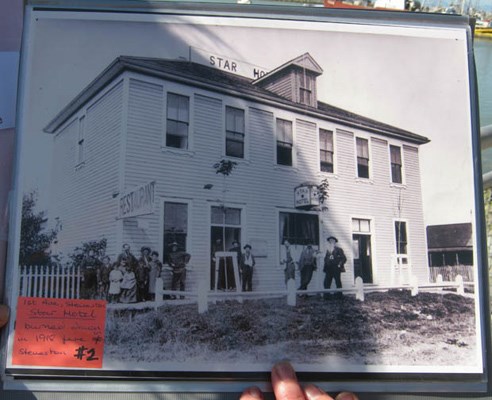In 1900, Steveston was a wild west town a hotspot for iniquity, housing brothels, opium dens and gambling rooms.
This was also the year Steveston recorded its first murder.
In April of that year, the villages police chief Alexander Main was found hacked to death in a shallow grave with his dog pinned underneath him.
At the time, Steveston was home to 350 inhabitants. Main was seen leaving his home, with his trusted dog, to investigate the theft of farming equipment at the Steves farm.
Main was last seen speaking to a Japanese gardener who told him three itinerant Asian men in a cabin a mile east of town could be the culprits. Main left to investigate and it was a few days later that the grizzly discovery of his body was made.
Although news was that all three men were involved in the heinous crime, only Yip Luck was charged and he hung for the murder.
Welcome to the Murder, Mayhem and Morality in Old Steveston, one of two tours offered by the Steveston Museum.
The tour takes participants to the beginning of the citys permanent settlement around 1870, when the first canneries opened along the stretch of the South Arm.
Before that, First Nations used to come here during the summer to gather roots and berries and to hunt, said museum guide, Kate Herring.
There was no law and order in the village until 1893. Thats when Herbert Drummond became its first official chief of police.
He had to contend with fights, drunken brawls, riots, arson and vandalism.
Herring then spoke about the 1918 fire, which destroyed many of the towns wooden buildings, including the Star Hotel (the site of Arts Connections), and the courthouse.
Although many Stevestonites know of the 1918 fire, a little known fact was the other catastrophe to hit this small town in the same year.
When the railway was being built in the Fraser Canyon, a huge rock fell and completely blocked a section of the Fraser River, said Herring.
The result was that the salmon couldnt reach their spawning ground and all the salmon died.
At that time, it was estimated more than 40 million salmon used to spawn here.
Rumour has it, there were so many fish you could walk on their backs, added Herring.
Throughout the hour-long tour, the group heard many fascinating tales and history about how Steveston grew into what we see today, including the fact that in 1895, Steveston was home to seven hotels.
There were many saloons on the waterfront and they openly sold illegal alcohol, added Herring. You could literally step off your boat and buy booze ... the police turned a blind eye to the mayhem.
The large majority of cannery workers and fishermen were men and many came here for two months.
Away from family and friends, oftentimes they found pleasures where they could in the brothels and saloons.
Legend has it that Shady Island was where the prostitutes hung out on the weekends, said Herring. The back alley, where Papis Market is, used to be known as Chinatown.
As she pointed to the two-storey building opposite Papis, she said, In 1893, the main floor of the buildings were for legitimate business and typically at least one room per building housed either a brothel, a European gambling room or opium den.
Behind Prickly Pear Garden Centre, the participants stood where the scene of the towns second murder that of known Vancouver gangster, Charlie Sing, who turned parttime police informant is said to have occurred.
It seems that in the early hours of Nov. 6,1903, Sing was found murdered in his hotel room, his throat slashed.
A warring gang put out a warrant against Charlie and he came out to Steveston to hide out, she said.
Charlie was known to wear traditional Chinese dress and a long braid, but he had his hair cut and wore Western clothes, thinking hed be safe.
An elderly Japanese man, Lai Ping, was bribed with money into telling the faction gang of Charlies whereabouts.
No one was ever charged with Sings murder.
Murder, Mayhem and Morality in Old Steveston is one of two tours offered by the Steveston Museum each Thursday and Saturday at 11 a.m., through to the end of September.
The other is titled Sliding through Steveston (runs at 1 p.m.), which offers a glimpse at the canneries, shops, temples and hotels in the village, then and now. The cost is $5 per person. Sign up at the Steveston Museum and Visitor Centre, 3811 Moncton St., or call 604-271-8280 to book your tour.



